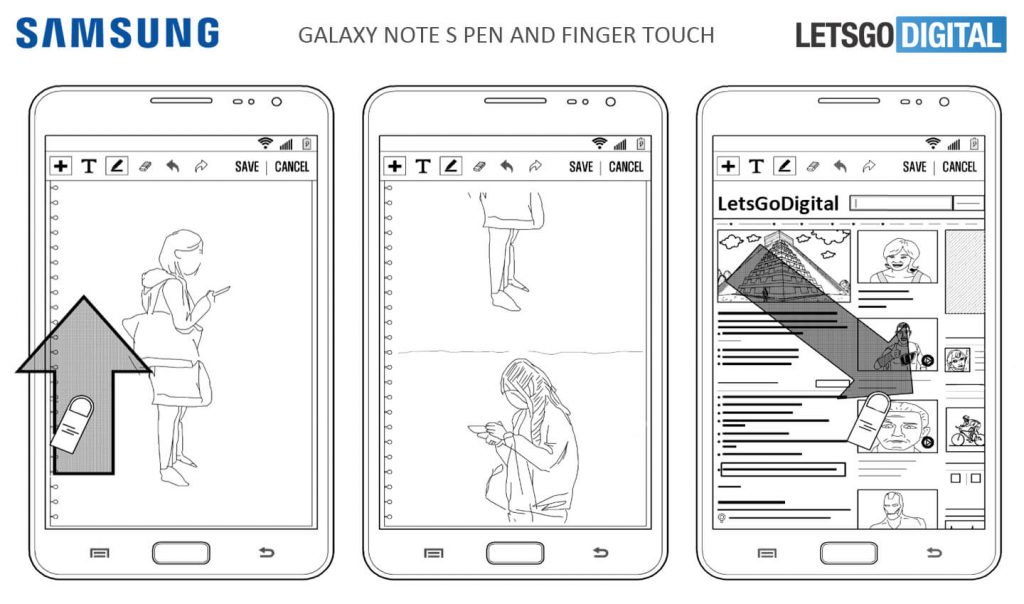
In the world of intellectual property, things can move slowly, and the technology we see released in a phone for the first time might’ve been developed some time before. In this case, the World Intellectual Property Organisation (or WIPO) has published a new Samsung patent on its website which relates to an enhanced method of operation of a touchscreen display with an S Pen and a finger, simultaneously. However, it appears that this patent might have been under development for quite some time, with the Korean patent dating back to 2013.
In the past, Samsung patents have not had a great deal of English therein, making understanding what’s going on a bit difficult. However, this patent has both Korean and English, and with the worldwide publication of the patent, it seems likely that this technology will appear in Samsung’s next S Pen enabled smartphone, the Galaxy Note 9.
How’s it work?
The patent shows a user interface with a quick-menu, which allows users to configure for that specific application per component whether you want to operate it with the S Pen or with your finger or with both.
Imagine writing a memo with the S Pen, but you want to remove a letter. Erasing is faster with your finger, so that part is then set as ‘finger’.
The patent speaks about two different S Pen variants. One design as we already know from the Note 8 and one we still know from 2013, the Samsung S Pen with Eraser. The latter actually looks a lot like an old-fashioned pencil, with an eraser on the back.
This makes it possible to write with the pen point and to erase a letter with the back of the pen. With the S Pen of the Note 8, the button on the pen can serve as an eraser. Both S Pen variants are shown in the patent sketches.
According to the patent, the touchscreen display can be made of LCD, AMOLED, a flexible display or a transparent flexible display.
When using finger operation, different entries can be recognized, including a touch, a multi-touch, a tap, a double tap, a long tap, a drag, a flick, a push, a pinch -in, a pinch-out and a scroll movement.
In addition, so-called patterns can be drawn with your finger. A Z movement and a round, clockwise and counterclockwise.
Both settings for the finger and the S Pen can be used to determine sub-settings such as thickness, transparency and color. The Samsung smartphone recognizes which form of touch input takes place (finger or S Pen) and will use the associated settings.
For those who like a bit of technical detail, you can read about Samsung’s patent here, with the English text here.




